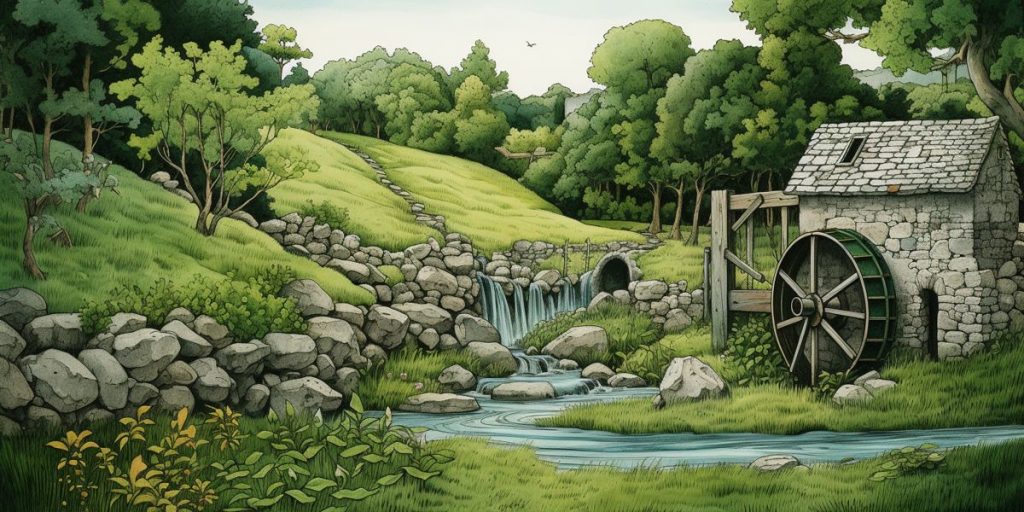Efforts to preserve Cyprus’s watermills are not just about conservation, but also about reconnecting with the island’s rich history and cultural identity. These initiatives involve documenting, restoring, and making watermills accessible for visits, aiming to protect the structures and the stories they represent.
What are the efforts to preserve Cyprus’s watermills about?
Efforts to preserve Cyprus’s watermills are about connecting with the island’s history and safeguarding its cultural identity. These initiatives involve conservation, restoration, and making watermills accessible for visits. They aim to protect the structures and the stories they represent, honoring a way of life that has shaped Cyprus for centuries.
Initiatives to preserve Cyprus’s watermills are in progress, propelled by a comprehensive book that documented 650 watermills throughout the entire island. These efforts are not just for conservation but are a reconnection with the island’s rich history and a reflection of its cultural identity.
The Plight of Larnaca’s Watermills
The imperative for a targeted effort is especially crucial in Larnaca, where a significant number of deteriorating watermills are located. Odysseas Hadjistefanou, the district officer and head of the water supply council of Larnaca, expressed during a presentation that “When watermills cease to exist, a significant part of our history will be lost.” He stressed the importance of these historical structures as reminders of our history and traditions in Cyprus.
A Historical Perspective
In Cyprus, watermills were a significant feature of the landscape from the Middle Ages to the early 20th century. They played a vital role in the island’s economy for centuries, mainly for grinding grains. This makes their preservation essential for understanding the economic history of the region.
Modern Efforts and Challenges
Several communities have already taken steps towards the conservation, restoration, or even reconstruction of these buildings in collaboration with the Department of Antiquities. These initiatives have made some watermills accessible for visits, which marks a positive step towards their preservation. Hadjistefanou voiced his hope for a targeted government effort, particularly the local authorities in Larnaca, to preserve and showcase their importance.
Out of the 650 windmills recorded, 67, or approximately 11 percent, are located in the Larnaca district. Alexis Michaelides, former Deputy Mayor and researcher, noted the variance in their preservation states. Some are almost intact, others in ruins, or identifiable only by remnants.
The Source of Life – The Ancient Aqueduct
Larnaca’s watermills were historically powered by an artificial river, a masterpiece created by the ancient Larnaca aqueduct. This sophisticated system, with burrows and pits under the water table of the Tremythos torrent, delivered a continuous flow of fresh water for both supply and irrigation.
The Tale of the Watermills
The book mentioned, a result of 30 cumulative years of research, documents vividly the watermills along each stream in the Larnaca district. Larnaca’s Mayor, Andreas Vyras, praised the authors for their dedication to preserving the island’s cultural heritage. He remarked on how the book allows readers to travel back in time, “weaving tales and myths that accompany the watermills.”
A Collective Memoir
The research for the book integrated diverse sources, illuminating the watermills from different historical periods. It drew upon Cypriot press articles from the British colonial period and data from the Ottoman census of 1572, offering a multifaceted view of the watermills’ role throughout the ages.
Cultural and Economic Significance
By chronicling the watermills, not only does the book aim to protect the structures themselves, but it also aspires to keep alive the stories and livelihoods they represent. From the labors in the fields to the baking of bread, the watermills are a testament to the ingenuity and resilience of past generations.
Preserving for Posterity
With the desire to maintain and celebrate this heritage, the initiatives underway are more than just nostalgic acts; they are steps towards honoring and understanding a way of life that has shaped the land and its people for centuries.
Quick Recap
- Efforts to preserve Cyprus’s watermills are about connecting with the island’s history and safeguarding its cultural identity.
- Initiatives to preserve Cyprus’s watermills involve conservation, restoration, and making them accessible for visits.
- Larnaca is a crucial area for preservation, as many deteriorating watermills are located there.
- Watermills played a significant role in Cyprus’s economy for centuries, making their preservation essential for understanding the region’s economic history.
- The preservation efforts include documenting the watermills in a comprehensive book, integrating various historical sources to provide a multifaceted view of their role throughout the ages.

